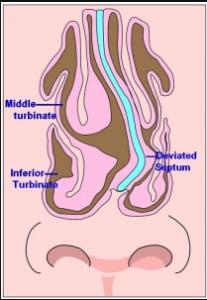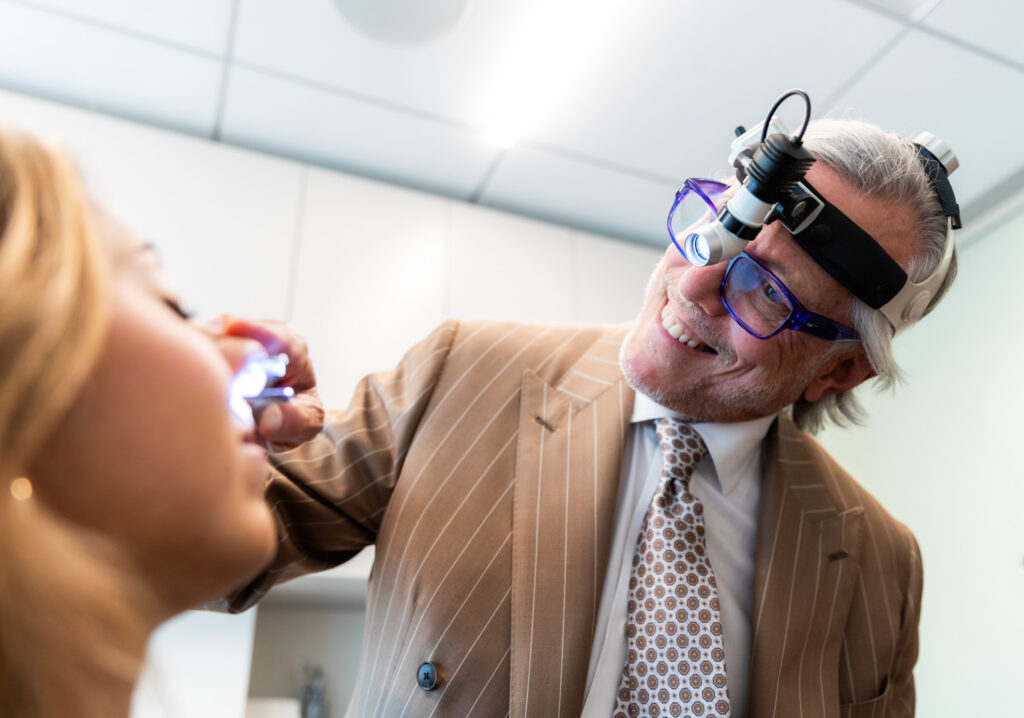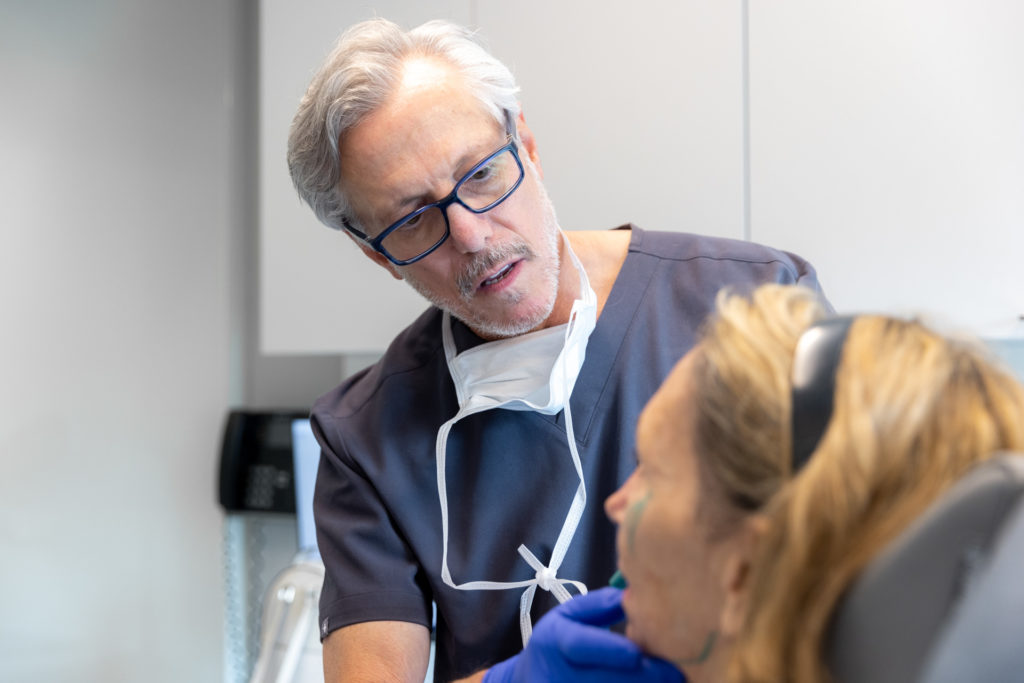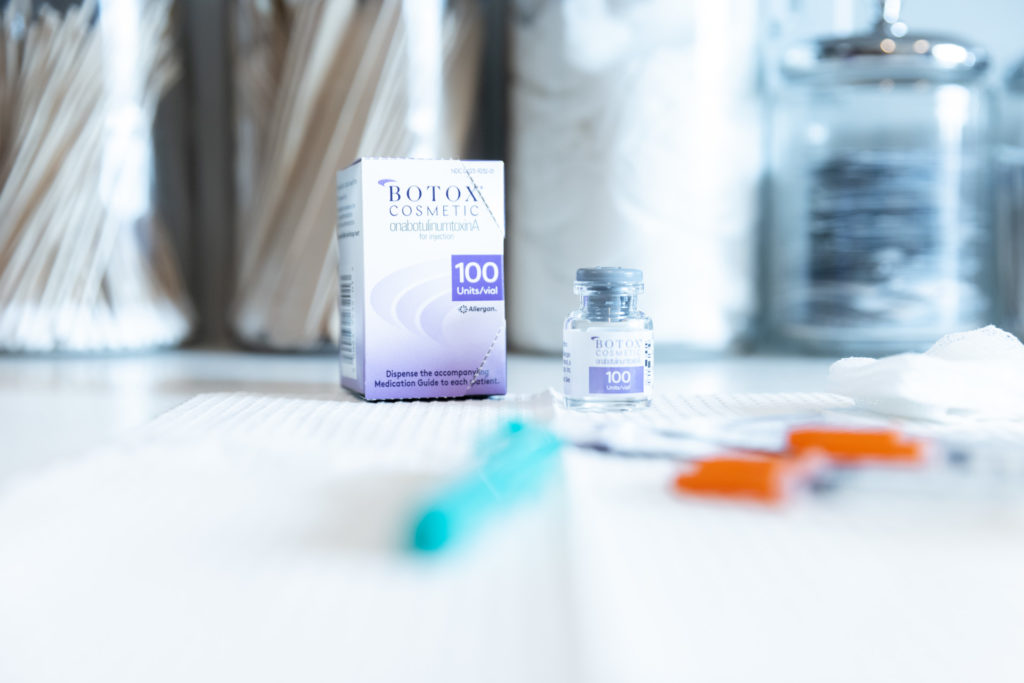
If you regularly have trouble breathing through your nose, it could be more than allergies. You could have a deviated septum, which is the most common cause of chronic nasal obstruction. Functional nasal surgery, formally called “septoplasty,” can straighten out a deviated septum to create more open nasal airways so that you can breathe more easily.
Septoplasty often overlaps with rhinoplasty procedures, although the surgeries have different purposes. Despite popular belief, if your only issue is a deviated septum and nasal obstruction, septoplasty alone can be performed without any external change to the nose through rhinoplasty.
Dr. Steven J. Pearlman is a rhinoplasty specialist and septoplasty specialist that specializes in nasal surgeries to correct both form and function of the nose. He is uniquely dual board-certified in Otolaryngology-Head and Neck Surgery as well as Facial Plastic Surgery, making him a sought-after nose surgeon.
What is a deviated septum?
The nasal septum is a wall of bone and cartilage between the two sides of the nose. This piece of anatomy runs all the way from the floor of the nose to the bridge and down to the nasal tip.
In a “perfect” nose, the septum is straight, but for many individuals, the septum is deviated or crooked and blocks part of one or both sides of the nose. This deviation may be caused by an injury or may have been present since birth, and many people are unaware that they have a deviated septum or what may have caused it.

Many people have a mildly deviated septum and no problems with nasal breathing. You wouldn’t know you had a slightly deviated septum without a professional exam.
However, a deviated septum can be severe enough to cause perpetual nasal blockage on one side that prevents your ability to inhale freely. Sometimes patients come to Dr. Pearlman for a rhinoplasty and aren’t even aware of an almost total blockage of one nostril from a deviated septum. That’s why a nose surgeon, even for cosmetic rhinoplasty, should thoroughly examine the inside of your nose as well.
Symptoms of a deviated septum
- Obstruction in one or both nostrils
- Noisy breathing
- Frequent nosebleeds
- Facial pain or headaches concentrated on the nose
- Snoring or sleep apnea
- Sinusitis
- Postnasal drip
Am I a candidate for deviated septum surgery?
If you’re suffering from the above symptoms, it’s likely that you have a deviated septum and will want to consider septoplasty to correct it. The nose is one of the body’s major sensory organs, and it greatly affects your quality of life.
A deviated septum that causes no problems may not need to be corrected. However, a deviated septum that does interfere with nasal breathing should be corrected with septoplasty.
A septoplasty is a straightforward procedure with minimal recovery time that can help you breathe more easily, sleep better, and live a less obstructed life.
The best candidates for septoplasty are physically healthy, have realistic expectations about the surgery, and are old enough that the septum has stopped growing or changing—typically 14 years old for a female and 15 to 16 years old for a male.
What if it’s more than a deviated septum?
A deviated septum is not the only reason your nose could be continually feeling stuffed or blocked, and there are procedures to help these as well: turbinate surgery, nasal valve surgery and functional endoscopic sinus surgery.
What are the turbinates?
The turbinates are another structure that contributes to your nasal airway. They are curly bones that help channel the air you breathe to humidify it and bring it to body temperature before it gets to your lungs. Reducing the size of turbinates can help improve nasal blockages.
The Nasal valve
The nasal valve is the narrowest part of the nose. Some patients have narrowing of the sidewalls of the nose that can cause or contribute to obstructed nasal breathing.
Endoscopic Sinus Surgery
Another possible cause of breathing trouble is sinus issues. Your sinuses drain into the nose through tiny passages or corridors between the turbinates. When these small ports get blocked by a cold or allergies, the mucus backs up and bacteria can pool.
If you have tiny sinus openings, this can lead to recurrent infections that disrupt your breathing and can be exacerbated by a deviated septum.
Endoscopic sinus surgery uses tiny surgical telescopes, called endoscopes, to explore inside the sinus openings. These sinus openings can then be surgically enlarged to enhance fluid drainage from the sinuses and prevent backup of mucus and bacteria.
Endoscopic sinus surgery is frequently performed at the same time as septoplasty since a deviated septum is often a significant contributing factor. It can also be safely done in conjunction with cosmetic rhinoplasty.
Surgery for a deviated septum: how it works
Septoplasty is commonly performed along with cosmetic rhinoplasty, but it’s not necessary to combine the two if you’re not interested in aesthetic changes. It’s still valuable to schedule your consultation with a facial plastic surgeon.
With a background in both specialties, facial plastic surgeons are often more qualified than surgeons who do not have this dual training to perform septoplasty with or without rhinoplasty.
Consultation with the surgeon
First, the condition must be diagnosed through careful examination of the inside of the nose. Once a deviated septum has been diagnosed, a surgical plan will be put into place. Some surgeons send patients for a CT scan. A skilled nasal surgeon does not need a CT scan to diagnose a deviated septum. However, if you have concurrent chronic sinusitis, a CT scan can delineate the extent of your sinus issues and will be necessary if Functional Endoscopic Surgery is being considered.
What to expect
A consultation strictly for septoplasty takes about 20 minutes because the examination is straightforward and the surgery is easy to discuss. First, we diagnose a deviated septum by performing a careful examination of the inside of the nose using a headlight and a small device called a nasal speculum. When in conjunction with a consultation for rhinoplasty, the consultation is closer to 45 minutes.

For a deeper inspection of the nasal cavity, openings of the sinuses, and the back of the nasal airway, we can also use a flexible or rigid nasal endoscope.
While most deviated septums can be diagnosed by a thorough nasal examination, some may use CT scans to better visualize the back of the nose and the sinuses.
If you have recurrent sinusitis, a CT scan will add more information on the status of your sinuses that can’t be seen, even with a nasal endoscope. Some insurance companies highly recommend a CT scan to further document a deviated septum. However, if you do not have any symptoms of chronic sinusitis, Dr. Pearlman can take a photograph of your deviated septum using an endoscope to eliminate the need for a CT scan.
Adding rhinoplasty consultation
For septoplasty with rhinoplasty, (septorhinoplasty), the consultation is about 45 minutes, and it includes a full review of the patient’s medical history and what they are looking to correct. We perform 2D and 3D Vectra imaging with custom morphing on all primary rhinoplasty patients.
Computer imaging is an excellent tool to demonstrate potential results and help foster a dialogue between Dr. Pearlman and the patient about agreeing on mutual surgical goals.
Even if a deviated septum has not affected nasal breathing in the past, Dr. Pearlman will always correct it for his rhinoplasty patients by also performing a septoplasty.
Even a few millimeters of narrowing of the sidewalls of the nose that usually occurs with rhinoplasty could make this small deviation of the septum more important and now cause obstruction. So, if a deviated septum is present, it needs to be fixed, even if the patient came in for a cosmetic rhinoplasty.
Adjusting the nasal tissues can cause a deviated septum to become symptomatic and create a blockage, which is why the issue should be corrected once diagnosed to avoid any possibility of a new problem.
Most patients who undergo septoplasty experience long-lasting improvements to their nasal breathing.
Deviated septum surgery
Again, patients can undergo septoplasty on its own or with rhinoplasty. If they choose to undergo septoplasty without rhinoplasty, there will be a functional improvement but no aesthetic changes to the nose.
Septoplasty alone
Here’s a quick overview of the septoplasty procedure:
- Achieves: Functional nasal restoration (improves breathing)
- Alters: The septum
- Open or Closed Approach: Closed (endonasal)
- Covered by Insurance: All or partial (depending on your insurance plan)
Septoplasty usually uses a closed surgical approach. The crooked cartilage of the septum and bone are moved, removed, reshaped, or scored to straighten the septum.
The vast majority of septoplasty surgeries are closed and performed through an endonasal approach, with all incisions completely hidden inside the nose. The incisions are closed with an absorbable suture.
Rarely, when the septum is extremely crooked, Dr. Pearlman may choose to use an open approach. The choice of surgical approach, closed or open, will be discussed with all patients at the time of the consultation and reviewed before surgery.
The procedure can be done with local or general anesthesia, depending on the patient’s comfort and how complex the surgery is.
Combining septoplasty with rhinoplasty
When you add in rhinoplasty with your deviated septum surgery, the overview of your procedure changes a little bit:
- Achieves: Cosmetic and functional improvement
- Alters: The septum as well as the outer shape, size, and projection of the nose and/or nostrils
- Open or Closed Approach: Open or closed
- Covered by Insurance: Not for the cosmetic portion.
If patients undergo a septorhinoplasty, the surgical approach may be open or closed and will include straightening the septum as well as adjusting the appearance of the nose.
In this case, patients will be able to enjoy improved nasal breathing in addition to all the cosmetic benefits of rhinoplasty, such as a more refined nasal tip, a straighter bridge, reduced nasal size, correction of bumps or depressions, and other aesthetic concerns.
What to expect during recovery
Since the majority of septoplasty surgeries are performed from the inside of the nose, there’s much less recovery and downtime required to heal from the procedure.
Most patients can be back to work on a computer at home within one or two days of surgery. If no external surgery or rhinoplasty is performed, there are no external splints or casts placed.
Patients cannot go to the gym or work out for 3 weeks, but often return to work within a few days for light activity. Even that soon, no one will be able to tell that they have had septoplasty surgery by looking at them.
Recovering from rhinoplasty procedures looks a little different and can take much longer, depending on the changes made.
Our patient care team will provide detailed instructions on all aspects of the process to help guide your recovery.
What to look for in a surgeon for your deviated septum
When you’re considering functional nasal surgery, you’ll want to make sure you find a surgeon who’s going to ensure the success of your procedure.
The first thing to consider: is this surgeon a specialist?
Surgery of the nose is extremely delicate. The nose is one of your sensory organs, so you want someone who can protect the function as they’re enhancing the form, and vice versa.
You’ll want to look for a specialist for your nasal surgery. If you’re looking for a septorhinoplasty, a surgeon who is the only board-certified in cosmetic surgery isn’t going to have the same level of expertise as someone who is also certified in Otolaryngology-Head and Neck surgery.
The second thing: how do you feel during your consultation process?
Of course, you should feel comfortable during your consultation experience. The consultation is your time to ask questions and get to know your surgeon.
Throughout your septoplasty consultation at Pearlman Aesthetic Surgery, we highly encourage you to ask any and every question on your mind. We will walk you through every step of the process so you can feel confident in your decision to receive a septoplasty by Dr. Steven Pearlman.
Frequently asked questions about septoplasty
Does a septoplasty cure snoring?
If your snoring is caused by nasal blockage, a septoplasty will help improve the condition dramatically. However, if there are other causes for your snoring, you may need to investigate those as well.
Will a septoplasty alter the way my nose looks?
Septoplasty alone has no effect on the appearance of your nose. There is no external splint or cast for the majority of patients. Dr. Pearlman often tells his septoplasty patients their own mother wouldn’t know they’d had surgery just 2 days after getting their septum corrected.
Will insurance cover my procedure?
Insurance companies may cover all or a portion of deviated septum surgery, but they are not likely to cover the cost of rhinoplasty. Patients should be aware that most insurance companies do not cover fees for rhinoplasty, even when it is performed with a septoplasty.
Does deviated septum surgery leave a scar?
There will be no visible external scars. In the profoundly rare case that you have an open procedure, there will be a small, barely visible scar that is easily lasered away if it bothers you.
Book your septoplasty consultation at Pearlman Aesthetic Surgery
If you struggle with chronic breathing issues, don’t force yourself to live with the discomfort. A septoplasty can drastically improve your nasal functionality so that you can breathe more easily. You’ll enjoy a newfound quality of life from this functional surgery, with expert care every step of the way from the team at Pearlman Aesthetic Surgery.
Dr. Steven J. Pearlman is a dual board-certified facial and reconstructive plastic surgeon. He has performed over 7,500 rhinoplasties and septoplasties in his career and is a specialist in rhinoplasty techniques, including the Piezo Ultrasonic Rhinoplasty and Preservation Rhinoplasty.
Dr. Pearlman is also dual board-certified in Otolaryngology-Head and Neck Surgery as well as Facial Plastic and Reconstructive surgery, making him a uniquely qualified nasal surgeon.
Whether you need a septoplasty, a rhinoplasty, or both together, Dr. Pearlman can ensure you have a nose that makes you look and feel like the best version of yourself.
Schedule your consultation today to get started.
Not quite ready for an in-person visit? You can use our rhinoplasty planning tool to learn more about the procedures we offer.




